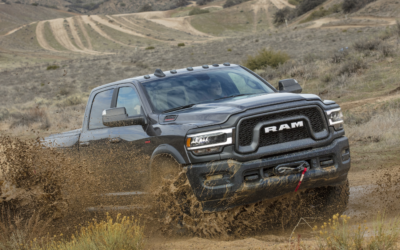Worst Truck Bottlenecks in the US
Do you want to improve the route timing of your fleet vehicles and ensure that they always reach the project site on time?
Are you tired of your fleet vehicles getting delayed and facing heavy costs due to unexpected truck bottlenecks?
Do you want a truck bottleneck list to ease your struggle?
Well then, you have come to the right place!
In the fleet industry, every minor detail matters in keeping your customers satisfied. Every step counts, from maintaining the vehicles and making sure your drivers are well-rested and ready for the job to ensure that your trucks reach the job site on time.However, it’s not always easy for huge fleet trucks to reach their destination on time, particularly when the route to the site is full of potential traffic bottleneck spots.
These are spots across a country where there’s a high likelihood of a localized disruption of traffic on a highway, road, or street. Unlike regular traffic jams, traffic bottlenecks are usually a result of a specific physical condition such as badly timed traffic lights, faulty design of the road, or even sharp curves. These bottlenecks can also be caused by temporary occurrences such as vehicular accidents.
Now, imagine a huge fleet truck trying to maneuver its way through a tight spot on the road. Such an instance is bound to cause a delay in the truck’s overall time to reach the job site. Similarly, freight trucks and even relatively smaller fleet trucks are often involved in clogged bottlenecks and road congestions.
However, to ease this struggle of fleet companies, the American Transportation Research Institute (ATRI) has released its yearly truck bottleneck list. This is essentially a list of the utmost congested truck bottlenecks in the US.
So, let’s take a look at the ATRI’s bottleneck list for trucks:
American Transportation Research Institute’s Truck Bottleneck List
This year’s list of truck bottlenecks generated by the American Transportation Research Institute is topped once again by the intersection of I-95 and SR 4 in Fort Lee, New Jersey. Here are the top 10 US highway intersections in the list:
- I-95 and SR 4 in Fort Lee, New Jersey
- I-285 at I-85 (North) in Atlanta, Georgia
- I-24/I-40 at I-440 (East) in Nashville, Tennessee
- I-45 at I-69/US 59 in Houston, Texas
- I-75 at I-285 (North) in Atlanta, Georgia
- I-290 at I-90/I-94 in Chicago, Illinois
- I-20 at I-285 (West) in Atlanta, Georgia
- I-71 at I-75 in Cincinnati, Ohio
- SR 60 at SR 57 in Los Angeles, California
- I-710 at I-105 in Los Angeles, California
So, how does the ATRI generate this list?
Well, it calculates the degree of truck-involved bottlenecks at 300 varied sites on the national highway structure. It does so based on the data gathered by the GPS in more than 1 million heavy-duty trucks. The research then uses tailored software applications and analysis techniques to form a congestion impact ranking for all of the 300 locations. It also uses terabytes of data from trucking operations to create this ranking.
According to DanPallme, who’s the Tennessee Department of Transportation (TDoT) Assistant Bureau Chief of Freight and Logistics, the ATRI’s bottleneck analysis is an imperative tool for the TDoT. It’s because they work to maximize the efficiency and safety of their transport system. It also helps them make the smartest investments with the most potential.
Dan Pallme further elaborates that the supplementary capacity that the TD0T is offering as part of its ongoing I-440 Reconstruction Project ought to boost the safety and dependability of this vital corridor. It will surely help the highway promote the seamless movement of freight trucks.
The ATRI applied data from last year discovered that the number of locations experiencing noticeable congestion, with average everyday speeds of 45 mph or less, has boosted a whopping 92% in the last 5 years! This boost in bottleneck traffic is markedly more than the 10% growth in traffic congestion during that same period.
According to the CEO and President of the American Trucking Associations Chris Spear, this report by ATRI should be a wakeup call for all policymakers. It should drive them toward taking some constructive action and let the fact sink in that they can’t sit idly and do nothing. Moreover, Spear believes that this report also offers a readymade roadmap, which highlights all the locations where targeted investments need to be made. This will help solve the US’s rising infrastructure crisis.
The Bottom Line
The tuck bottleneck list shared by ATRI is of paramount importance for the fleet industry as it can lobby for a change in the American infrastructure. It’s certainly a step in the right direction and if policymakers make the right decisions, then it will help fleet trucks avoid getting stuck in such congested intersections. It’ll also help fleet drivers reach their job sites on time, which will increase the reliability and efficiency of fleet companies.
If you want full access to the revealing report of the top 100 congested truck bottlenecks, then visit ATRI’s website at TruckingResearch.org. This way, you can take a detailed look at each of the 100 spots.






